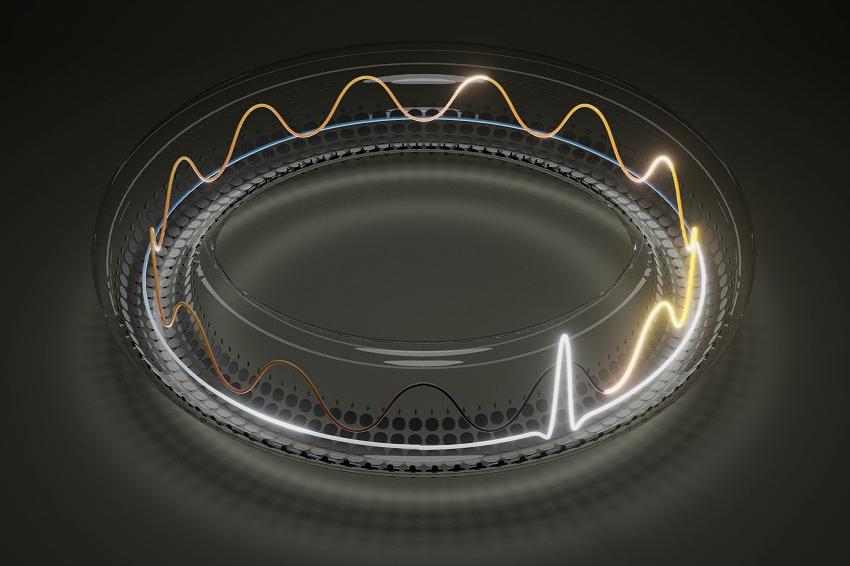Bloch oscillations in a synthetic dimension
26.04.2023 - New discovery holds great potential for the generation of optical frequency combs
The formation of periodic structures such as optical lattices gives access to the investigation of various complex phenomena in solid-state physics, condensed matter, and photonics, among others. In particular, extending these systems beyond their natural geometrical dimensionality is a growing field of research through the implementation of synthetic dimensions. Such a synthetic space can be realized by exploiting the system's discrete degree of freedom of the system, which, associated with a coupling mechanism, mimics the motion of a particle moving within a crystal lattice.
An original way to create a synthetic dimension in photonics is to implement it in the frequency domain through an optical resonator. The periodicity imposed by the cavity roundtrip time acts as an optical rule. One can then form the artificial lattice by coupling these frequency modes using an intracavity phase modulator. The resulting synthetic dimension is very similar to that formed by a one-dimensional crystal, where atoms are coupled to their nearest neighbor. Therefore, we expect to observe phenomena from solid-state physics.
Among others, synthetic dimensions have been exploited to observe Bloch oscillations – the motion described by particles confined in a periodic potential when subjected to a constant force. This phenomenon is known to disappear when the system is dissipative or in the presence of interactions. In fact, they are not observed in solids. In this context, researchers from tthe Free University of Brussels (ULB), the Laboratoire interdisciplinaire Carnot de Bourgogne in Dijon and the University of Auckland have implemented a synthetic dimension with dissipation, dispersion and nonliearity to study the fate of these oscillations.
Thanks to the system's nonlinearity, they were able to form a cavity soliton and observe permanent Bloch oscillations despite the dissipation. In addition to being the first experimental demonstration of Bloch oscillations in that framework, the intrinsic properties of the cavity soliton allow, on the one hand, to extend the synthetic dimension far beyond previous realizations thanks to the formation of a frequency comb and, on the other hand, to probe the reciprocal space by virtue of its ultrashort temporal duration.
This discovery holds great potential for studying and modelling complex phenomena from condensed matter physics that are difficult to investigate in their natural environment. These results also pave the way for new applications, notably in topological photonics and for the generation of optical frequency combs. (Source: ULB)
Link: Service OPERA-Photonique, Université libre de Bruxelles, Brussels, Belgium







